The final stop in our tour of Oregon was Cape Blanco State Park, situated on the sparsely populated southwestern coast of the state. The cape is a rocky headland that juts out into the Pacific, reaching the second-furthest-west point in the 48 contiguous states. Surrounding the cape is a field of partially submerged rocks called the Blanco Reef which make for dramatic photos but challenging navigational conditions. The treacherous rocks and swirling currents are the reason that a lighthouse was first authorized for construction on Cape Blanco in the 1860s. The Cape Blanco Light has been in continuous operation since 1870 and stands tall against the elements in this relatively remote location.
We had our own battles with the elements during our stay in the area. In the span of just five days we experienced everything from blindingly clear, sunny days to a day of nonstop rain to fog completely enshrouding the cape. Still, we were relieved that we missed out on the famously ferocious winds that can buffet this portion of the coast. The timing of our visit at the very tail end of the normal visiting season also meant that we had our pick of spots at the first-come, first-serve campground in the state park.
The campsites are tucked snugly inside a dense and mossy forest, so although we were parked with our rear panoramic windows pointed toward the Pacific we enjoyed only the briefest glimpses of the water from our site. The forest muted the roaring ocean, and left us with the distinct impression that elves might pop out from behind the trees surrounding the campsite at any moment. The Coast Range of mountains keeps the Oregon coast extremely moist, and the resulting rich forest extends virtually to the edge of the sea.
Yet thanks to the network of trails that connects the entire park, after just a short walk from the campground we emerged from the forest to take in wide open vistas across the Pacific and out to the rugged cape. We spent many happy hours just gazing at the remarkable formations of the cape and the Blanco Reef and listening to the waves pounding the rocks. We didn’t see any whales, but predictably we did see rocks that looked like whales. (Every time we canoed or kayaked in Florida we saw dozens of alligator-like logs, so this is pretty typical for us.) The historic lighthouse was a lovely element in many of our photos. We made a brief stop at the Victorian home of the Hughes family, early pioneers in the area who ranched along the Sixes River, which is also within the state park. Cape Blanco proved to be a wonderful place to relax, reflect, catch up on reading, and commune with the outdoors before we head south to California.
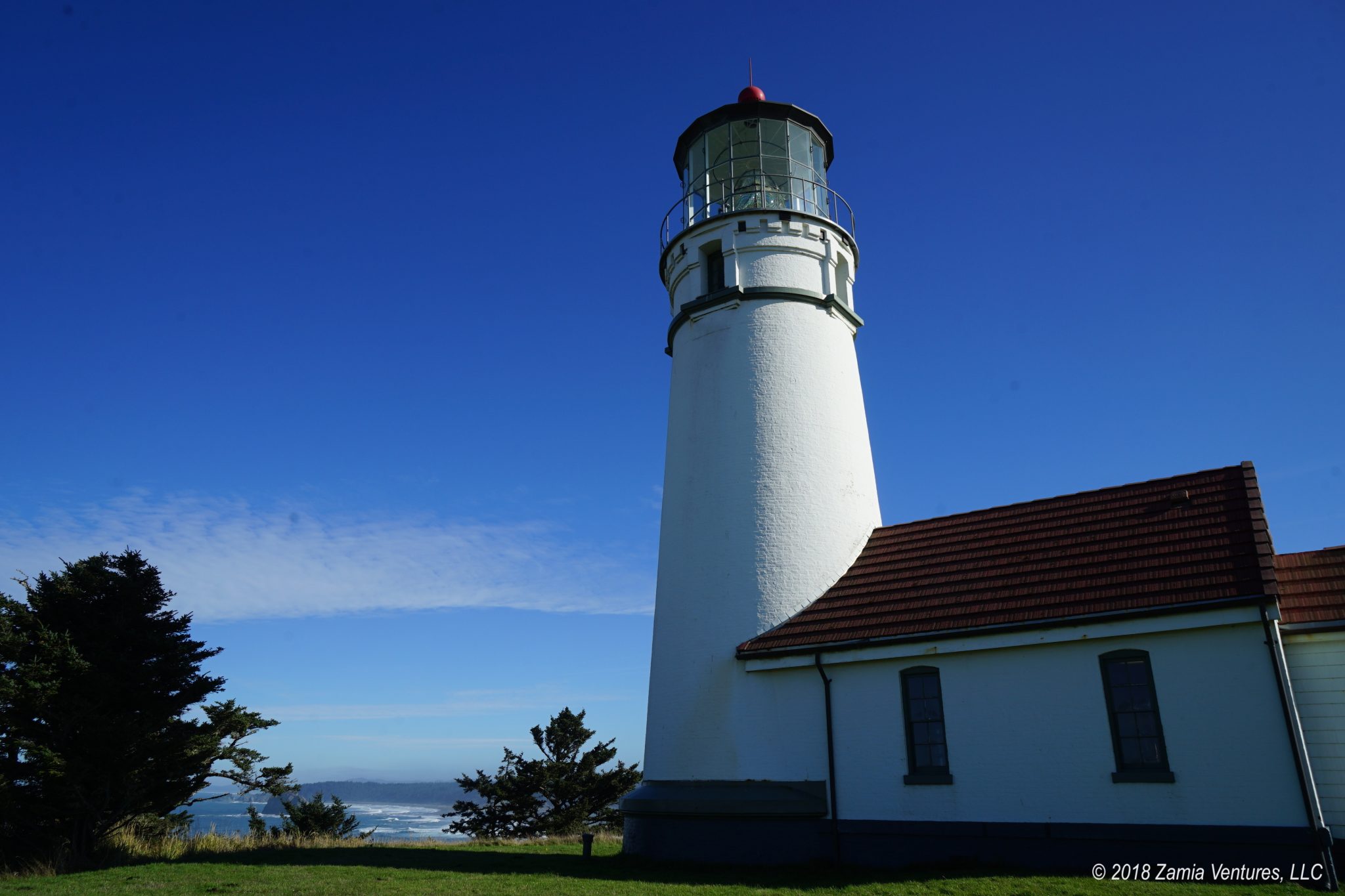
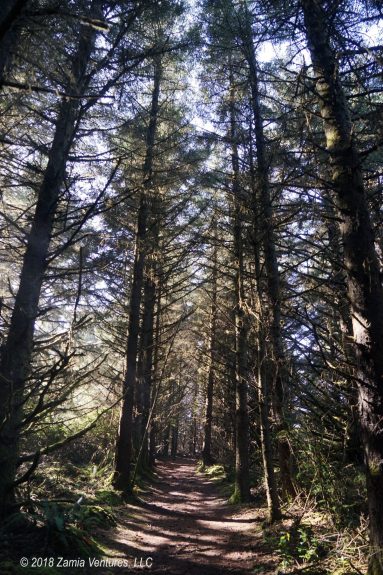
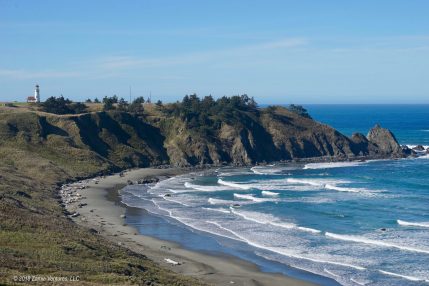
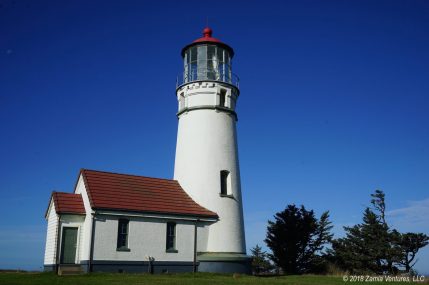
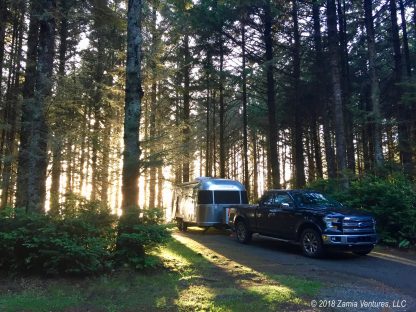
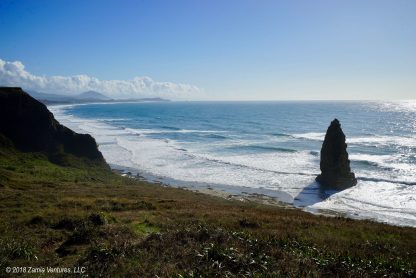
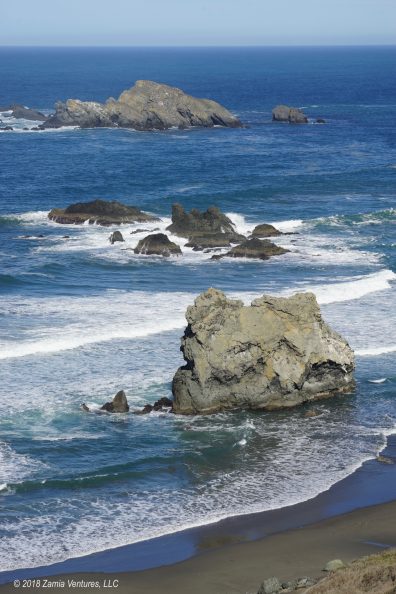
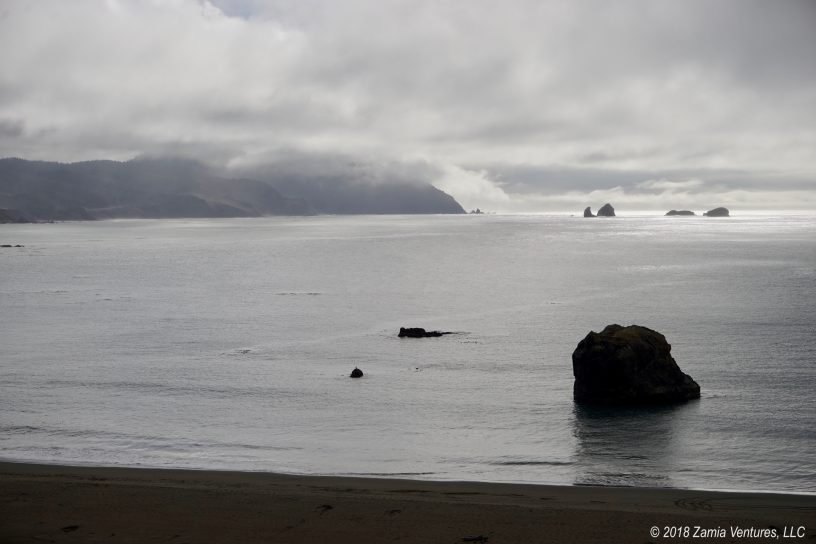
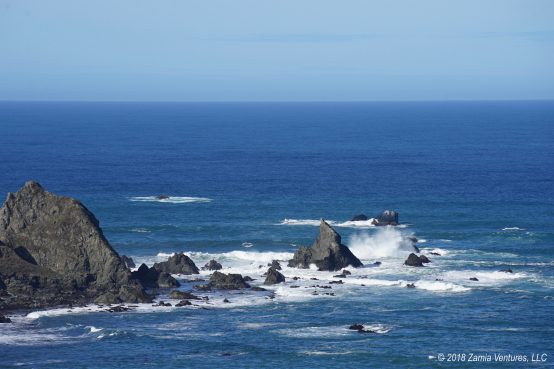
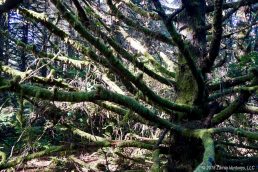
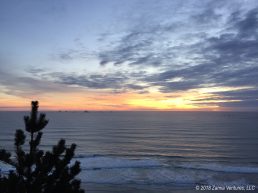
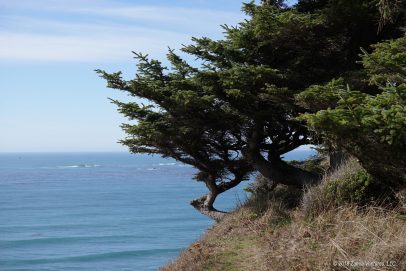
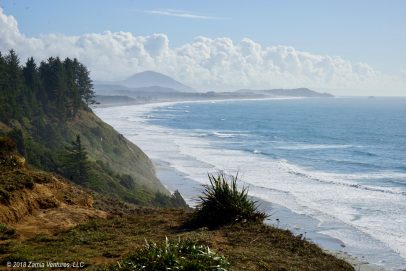
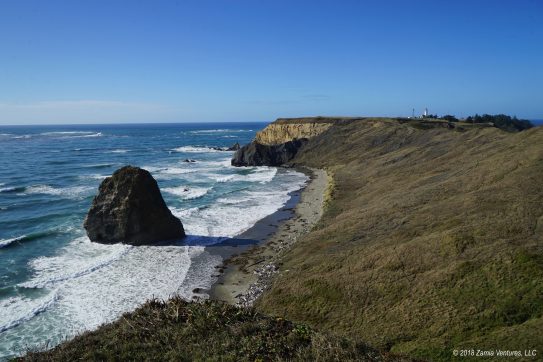
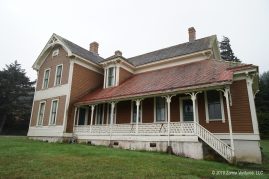
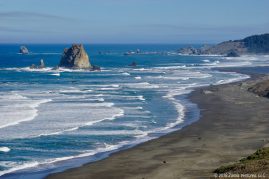
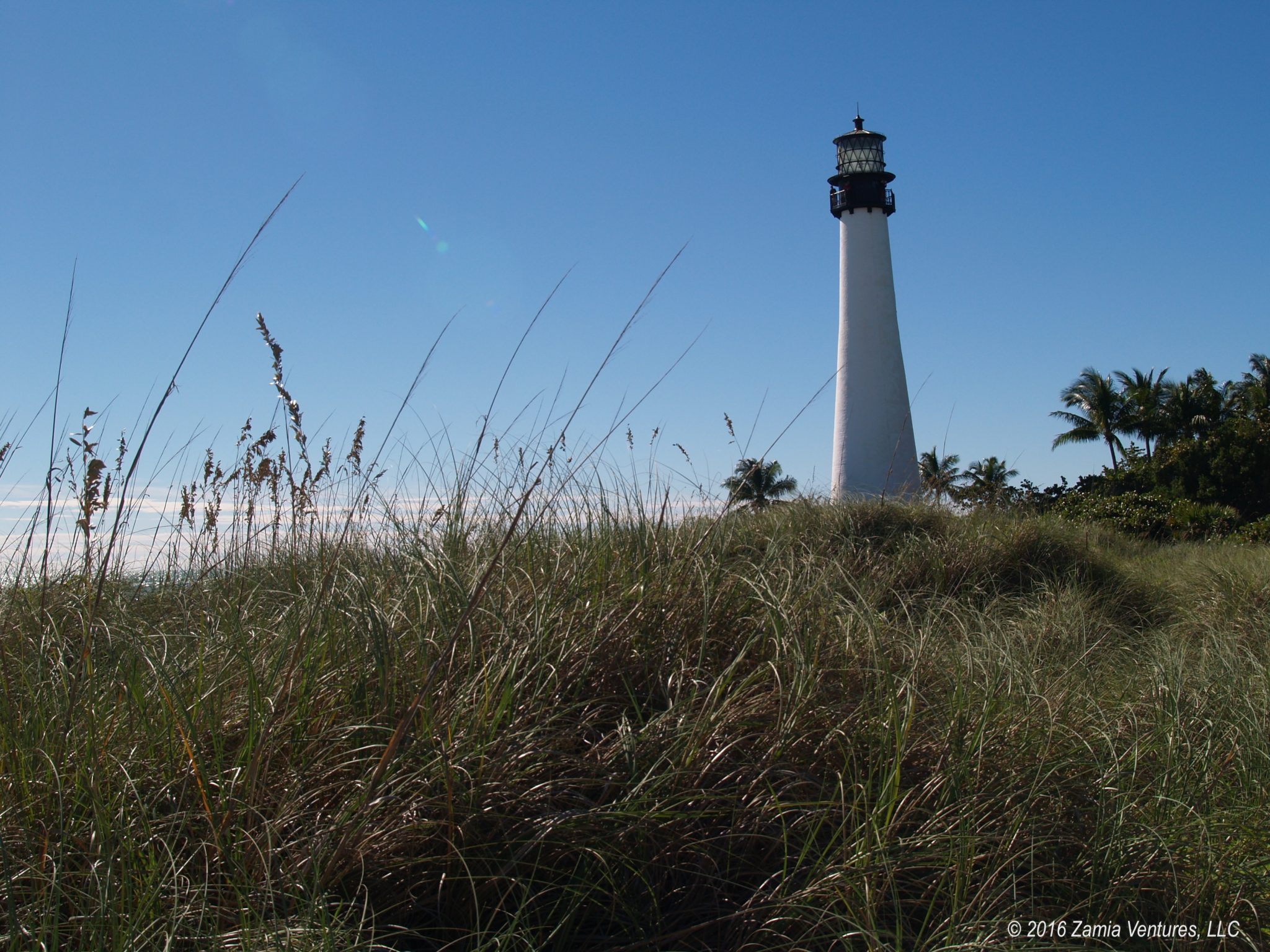
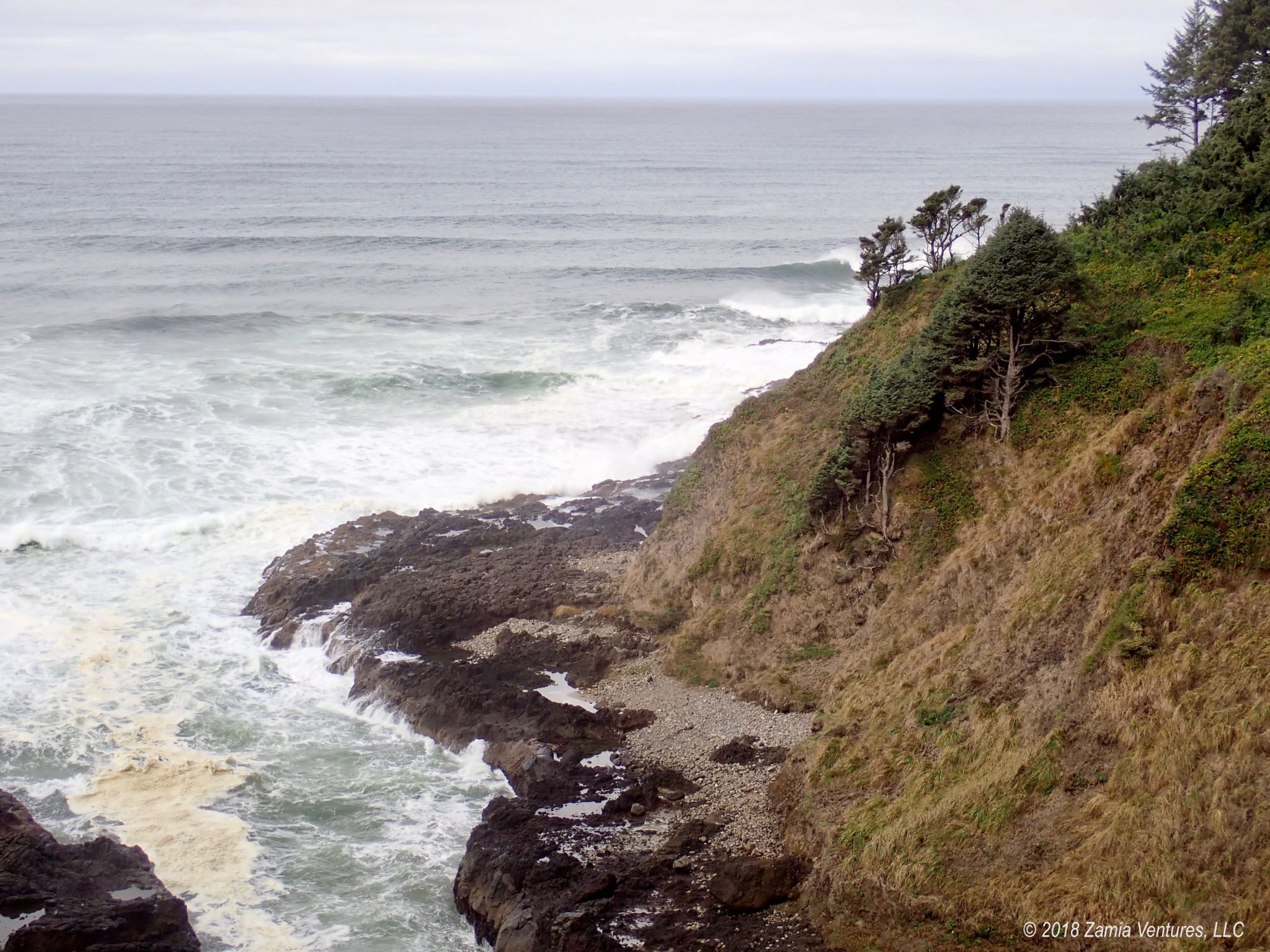
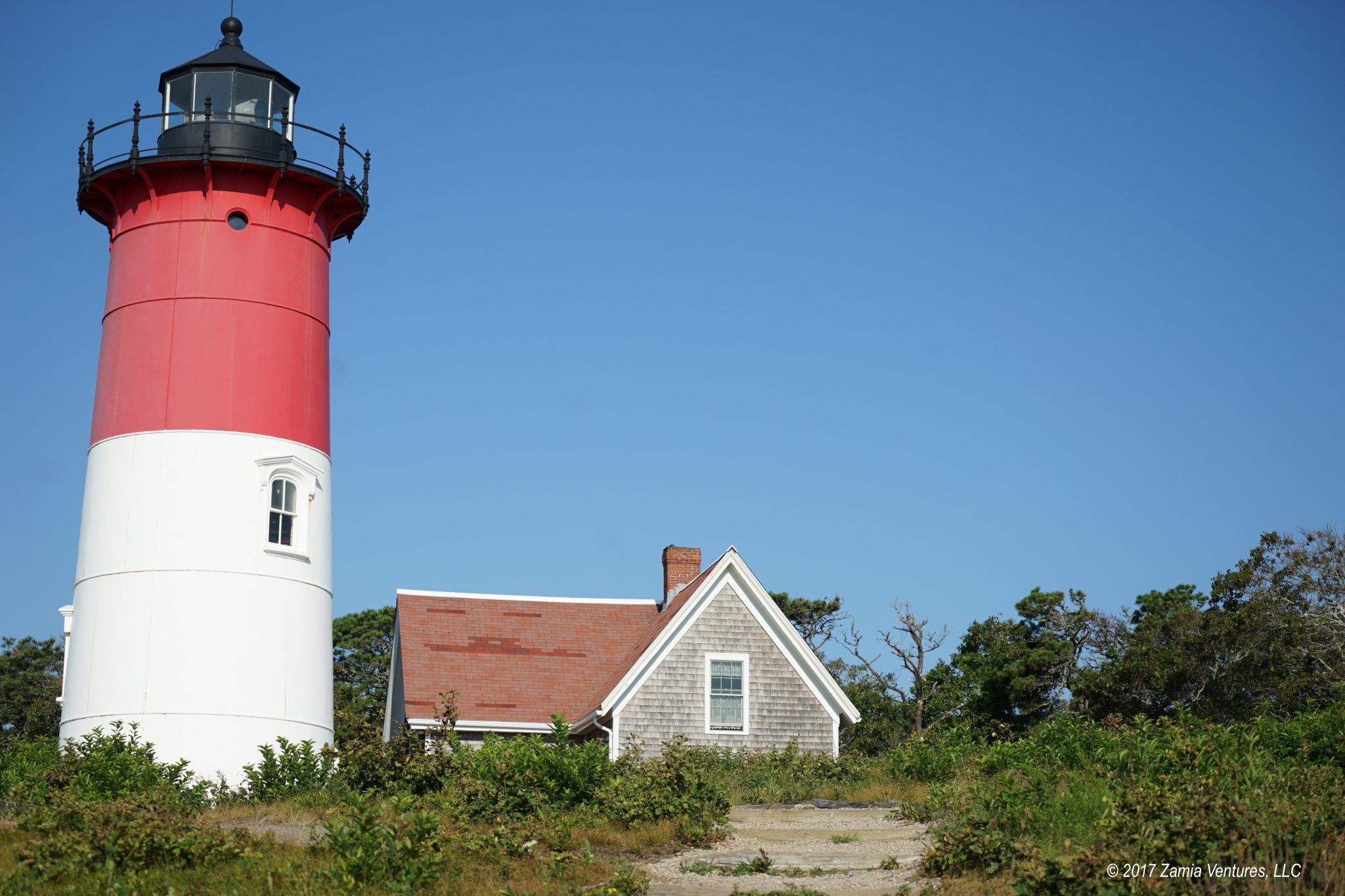
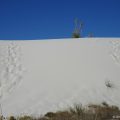
Nice ! Sunshine once again. Great views
We did have several days of nice weather…. which are disproportionately represented in the photos! When the weather is clear, this place is pretty spectacular.